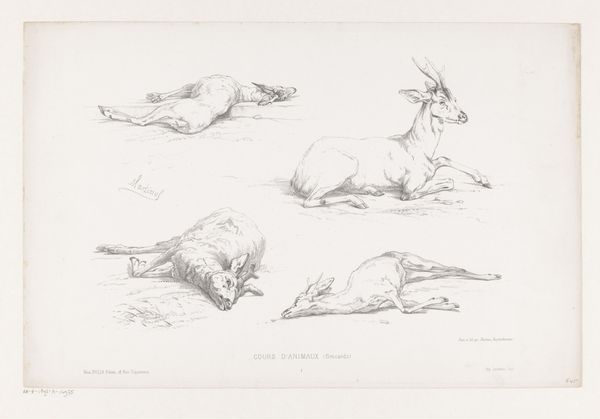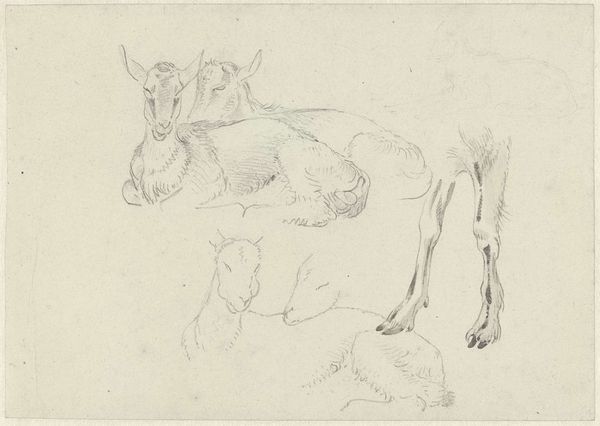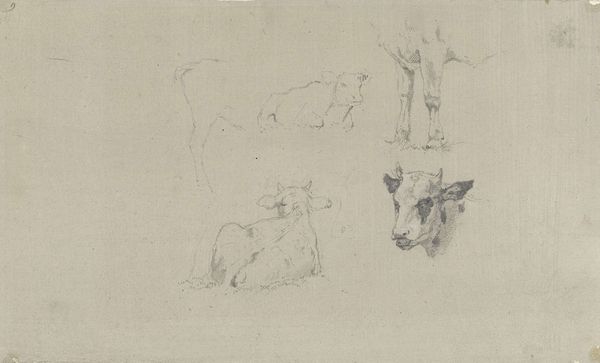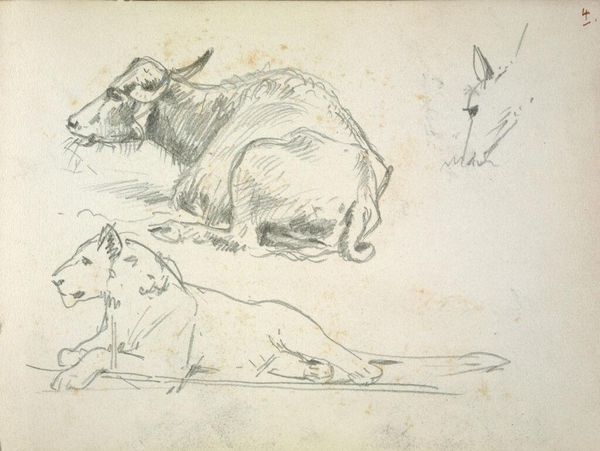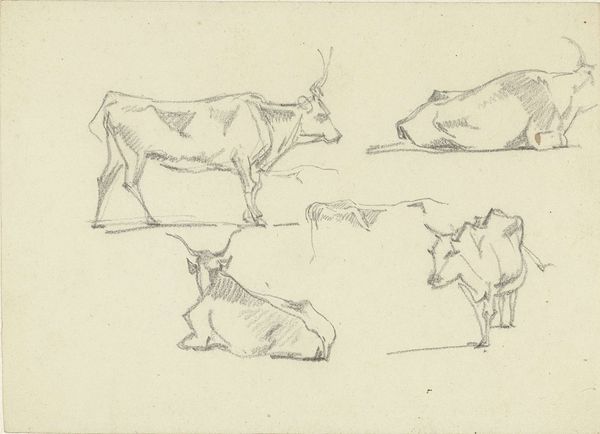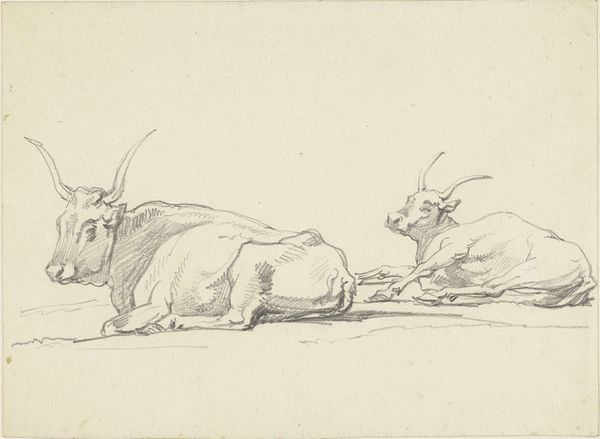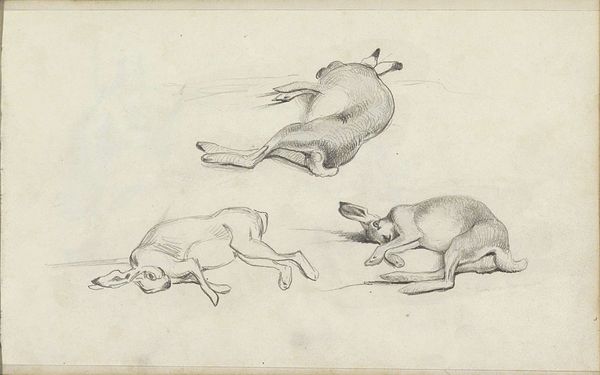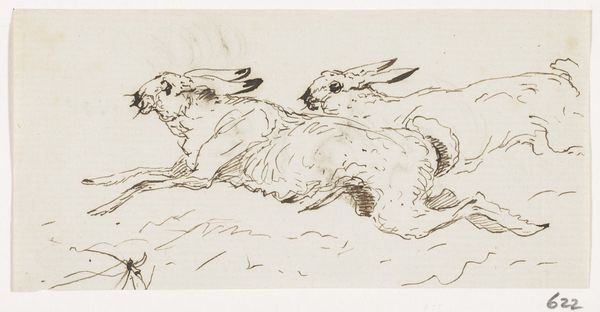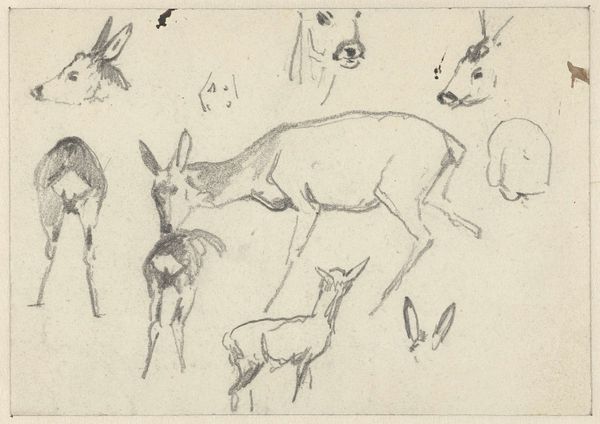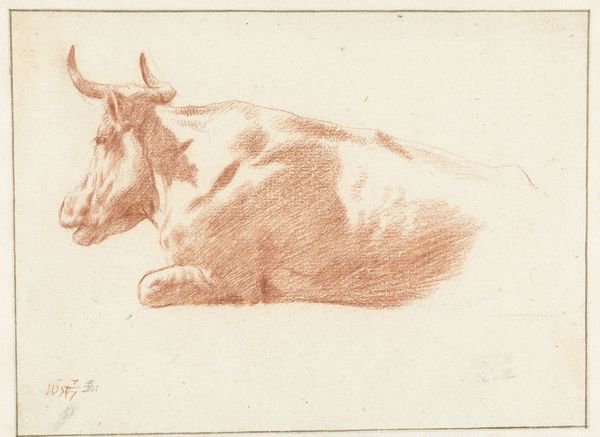
drawing, pencil
#
portrait
#
drawing
#
animal
#
pencil sketch
#
landscape
#
figuration
#
pencil
#
sketchbook drawing
#
realism
Dimensions: height 143 mm, width 176 mm
Copyright: Rijks Museum: Open Domain
Editor: Here we have Josephus Augustus Knip's "Three Studies of Resting Goats," created sometime between 1787 and 1847 using pencil. It feels like a casual observation, almost like a quick study from a sketchbook. What strikes you about this drawing? Curator: The fascinating thing about Knip's study is the materiality itself. The starkness of pencil on paper forces us to consider the artistic labor. No frills, just observation rendered through the directness of the medium. Notice how the "pedestals" beneath each goat elevate them, transforming them into subjects deserving of artistic attention. Editor: So you see the choice of materials as elevating the status of the goats themselves? Curator: Precisely. And that raises interesting questions about the social context. Were these goats prized possessions? Was Knip perhaps commissioned by a wealthy landowner? Or was he simply exploring the possibilities of representing the mundane? Think of the paper, where did it come from, who made it, who could afford it? Editor: I hadn't thought about the paper itself! I guess the accessibility of that material would shape who could even create art in the first place. Curator: Exactly! And look at the technique: the varying pressure of the pencil, the cross-hatching to create texture. This is a study in form and light, but it’s also a record of Knip's physical engagement with his subject and his materials. How does the level of detail change your perception of it as a "quick sketch"? Editor: It does make me reconsider the idea of a 'quick sketch' as just a fleeting impression. It seems much more considered now, focused on texture and form through the manipulation of pencil. I appreciate it more, recognizing that the "simple" drawing prompts reflections about materiality and socio-economic factors in art creation. Curator: Absolutely, it's in that space of material analysis that we challenge notions of high and low art, understand artistic choices, and see social reflections manifest in seemingly simple drawings.
Comments
No comments
Be the first to comment and join the conversation on the ultimate creative platform.
